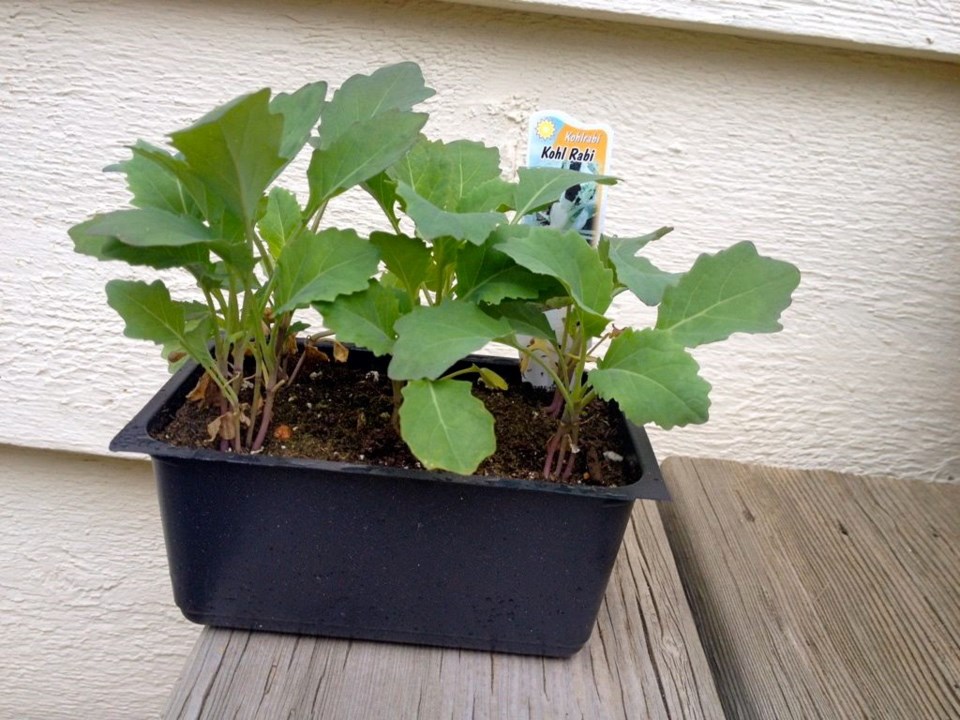Try it once; you'll love it forever.
Kohlrabi is versatile. Lightly steam it as vegetable serving. Add it into soups and stews. Sliver it raw for coleslaw. It's a never-soggy chip for dips.
Cut a thin full round, layer on salsa, salami, cheese and eat raw (refreshing summer lunch) or broil or three to five minutes for a pizza.
Eat the bulb at any size, from hardball to super-softball. The flesh is greenish white and has a mild, almost sweet flavour when the bulb is small and young. The flavour sharpens as the bulb ages and grows. Leaves are also edible, raw when young/small in salads, slaws, and cooked when older/larger.
Kohlrabi forms as an above-ground bulb. It needs room, as the mature harvestable plant is about 45 cm (18") tall and wide. However, Kohlrabi grows in cool weather, making it a perfect spring and fall crop. It can be alternated with tall hot weather crops like tomatoes, pepper and staked cucumber.
Think of a 30 cm (12") checkerboard layout. Plant seedlings now for June-July eating (as dip vehicle or coleslaw) in the black squares.
At the end of May, plant heat-loving tomatoes, pepper, cucumber between your large and soon to be harvested kohlrabi, in the white squares. You'll eat kohlrabi while tomatoes grow, making space.
Then in August-September, plant seedling between mature tomatoes. As the tomatoes die with cold weather, kohlrabi grows, but more slowly, just right as a hot dish from October to frost.
Editor’s note: The South Delta Garden Club is providing a weekly article to the Optimist, which will appear on-line on the Optimist website every Tuesday.



